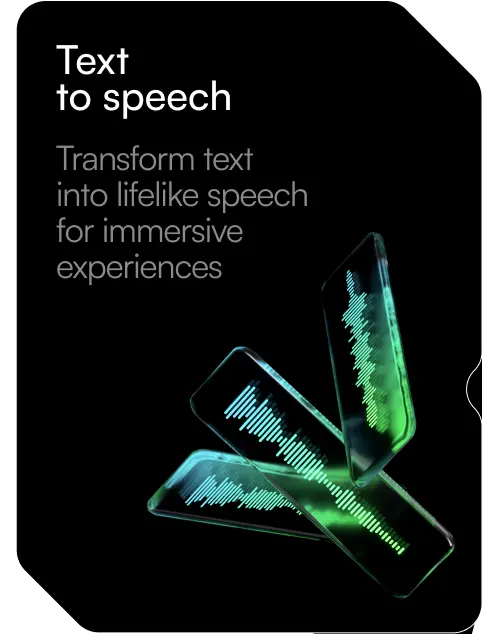AI Agents & Tools
Text to Speech
Our Text to Speech (TTS) project aims to create natural-sounding, expressive, and controllable AI-generated voices without sacrificing clarity or speed. In addition to conventional TTS, we investigate AI voice cloning, which provides multi-speaker and customised generation via speaker embeddings and LoRA adapters.
In addition to training custom voice models and curating high-quality datasets, we are also experimenting with multilingual, multi-emotion, and style-transfer synthesis. Our objective is to advance the quality and control of voice AI, whether it be through the creation of cloned agents, fictional characters, or instructional voices.

Areas of Contribution
1. Custom TTS Models
We experiment with and contribute back to the following architectures:
- VITS / YourTTS: Non-autoregressive synthesis with emotion conditioning
- Bark: Multilingual, multimodal speech synthesis with music tone injection
- StyleTTS2: Style control and speaker embedding mixing
- Tortoise: Slow but ultra-realistic voice generation for narration
Our fine-tunes include:
- Emotion-tagged speaker datasets (e.g., sarcasm, whisper, shout)
- Instructional tone datasets for professional narration
- Open-domain conversational samples with prosody variation
2. Voice Cloning + LoRA Adapters
We’ve developed LoRA adapters and speaker embeddings for:
- Internal team voices (used in agentic pipelines)
- Fictional character voices for agent role-play
- Ultra-clear instructional tones for tutorials or audio UI
Voice samples are embedded and managed via a speaker registry, mapped to prompts via UUIDs for reproducibility.
3. Dataset Contributions
We maintain several clean, prompt-aligned speech datasets:
studio-english-50k: high-SNR, multi-emotion English recordingsmono-mix-8lang: multilingual dataset (fr, es, id, ja, ru, zh, en, hi)agentic-dialog-speech: synthetic dialogues aligned with our agent framework
All datasets follow standardized markup (prompt text, emotion tag, speaker ID, sample path), and are compatible with TTS training libraries like ESPnet, Coqui TTS, and FastPitch.
Generation Infrastructure
We use TensorOne GPU Clusters with real-time audio preprocessing and support for:
- Batch generation of
.wav,.ogg,.mp3formats - Multi-speaker pipelines in a single job
- Post-processing filters: loudness normalization, silence trimming, reverb
- Metadata logging (speaker ID, prompt text, timestamp, waveform hash)
Inference endpoints are deployed with:
tensoronecli project deploy --imageName "tts-serverless-bark"
Real-World Use Cases
- Voice-enabled AI agents for research presentations
- Synthetic podcast voices for knowledge generation
- UI/UX narration prototypes
- Language learners and pronunciation tutors
Upcoming Research
- Cross-lingual speaker cloning with voice preservation
- Agent-driven emotional conditioning during dialogue
- Promptable speaking styles (e.g., “like a TED talk”, “like a bedtime story”)
- Multi-modal embeddings for text + emotion + gesture control (for TTS + animation)